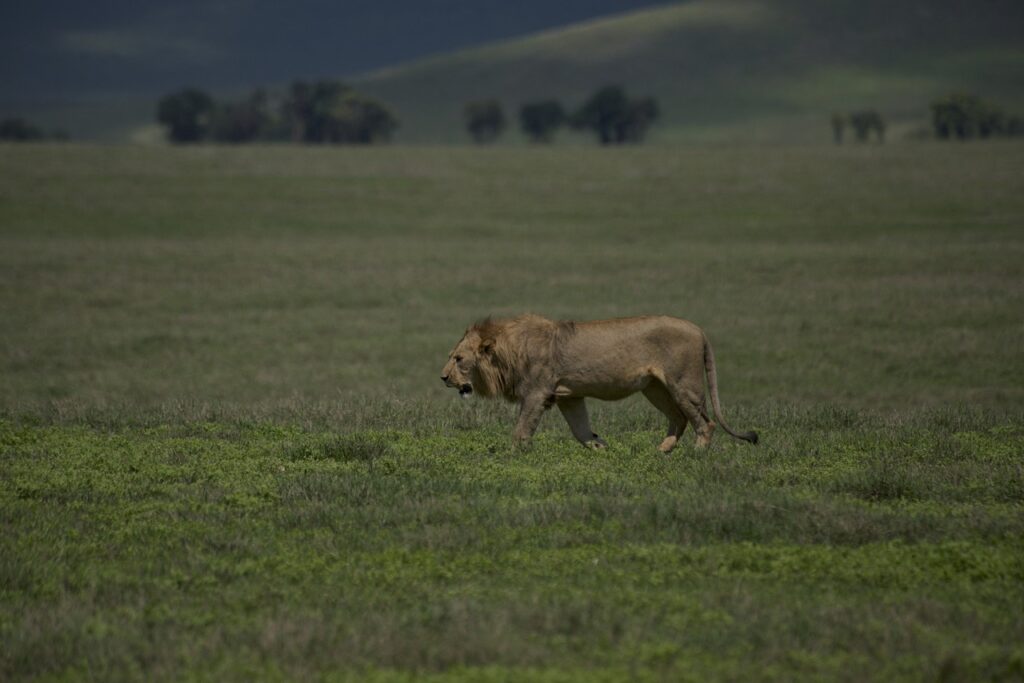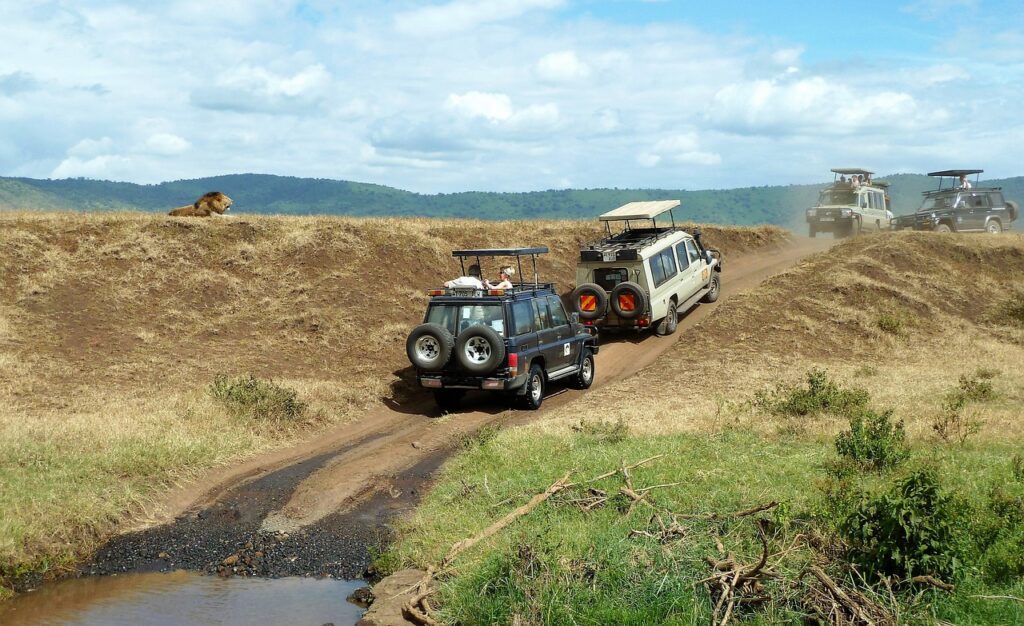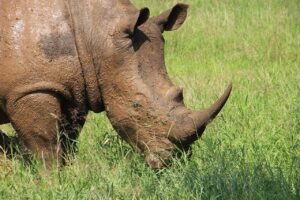Ngorongoro Crater Park Tanzania
The Ngorongoro Crater in Tanzania is a world-renowned natural wonder and a UNESCO World Heritage Site. Here’s a comprehensive overview of this unique geological formation and its significance as a safari destination:
Location and Geography:
Located in the northern part of Tanzania, the Ngorongoro Crater is part of the larger Ngorongoro Conservation Area, which spans over 8,000 square kilometers (3,100 square miles). The crater itself is the world’s largest inactive volcanic caldera, with a diameter of approximately 19 kilometers (12 miles) and a floor area of 260 square kilometers (100 square miles). It was formed millions of years ago when a large volcano erupted and collapsed on itself, creating the distinctive circular shape that we see today.
Wildlife and Biodiversity:
The Ngorongoro Crater is often referred to as the “Eden of Africa” due to its incredibly rich biodiversity and high concentration of wildlife. The crater’s fertile soils and permanent water sources support a wide variety of animals, making it one of the best places in Africa to observe wildlife up close. Some of the species commonly seen in the crater include:


See the big five in Ngrongoro Crater
Big Five: Lions, elephants, buffaloes, leopards, and rhinos can all be found within the crater, offering excellent opportunities for wildlife viewing.
Other Predators: Cheetahs, hyenas, and jackals are also present, often seen hunting or scavenging on the crater floor.
Herbivores: Zebras, wildebeests, gazelles, and various antelope species roam the grasslands and woodlands of the crater
The Ngorongoro Crater is a must-visit destination for wildlife enthusiasts, nature lovers, and photographers seeking an unforgettable safari experience in Tanzania. Its unparalleled biodiversity, stunning landscapes, and cultural heritage make it one of Africa’s most iconic and cherished natural treasures.
Marianne Mwega
Scenic Beauty
The Ngorongoro Crater is not only renowned for its wildlife but also for its stunning landscapes and panoramic views. Visitors can admire the crater’s steep walls covered in lush greenery and the vast grassy plains that stretch out across the crater floor. The backdrop of surrounding hills and forests adds to the dramatic scenery, especially during sunrise and sunset.
Birdlife: Over 500 bird species have been recorded in the Ngorongoro Conservation Area, including flamingos, eagles, vultures, and numerous waterfowl species around the crater’s soda lakes
Cultural Heritage:
In addition to its natural beauty, the Ngorongoro Conservation Area is home to the Maasai people, who have traditionally grazed their livestock in the area for centuries. Visiting a Maasai village provides an opportunity to learn about their customs, traditions, and way of life, adding a cultural dimension to the safari experience.
Conservation and Challenges:
The Ngorongoro Conservation Area faces challenges such as human-wildlife conflict, sustainable land management, and tourism pressures. Efforts are ongoing to balance conservation goals with the needs of local communities and tourism development, ensuring the long-term sustainability of this unique ecosystem.
Visiting the Ngorongoro Crater:
Visitors to the Ngorongoro Crater typically stay in lodges or tented camps located on the crater rim, offering stunning views and easy access to game drives into the crater. Game drives are the primary activity, allowing visitors to explore the crater’s diverse habitats and observe its wildlife in their natural environme.
This overview captures the essence of what makes the Ngorongoro Crater in Tanzania such a remarkable and sought-after safari destination, blending its geological history, wildlife abundance, scenic beauty, and cultural significance.






